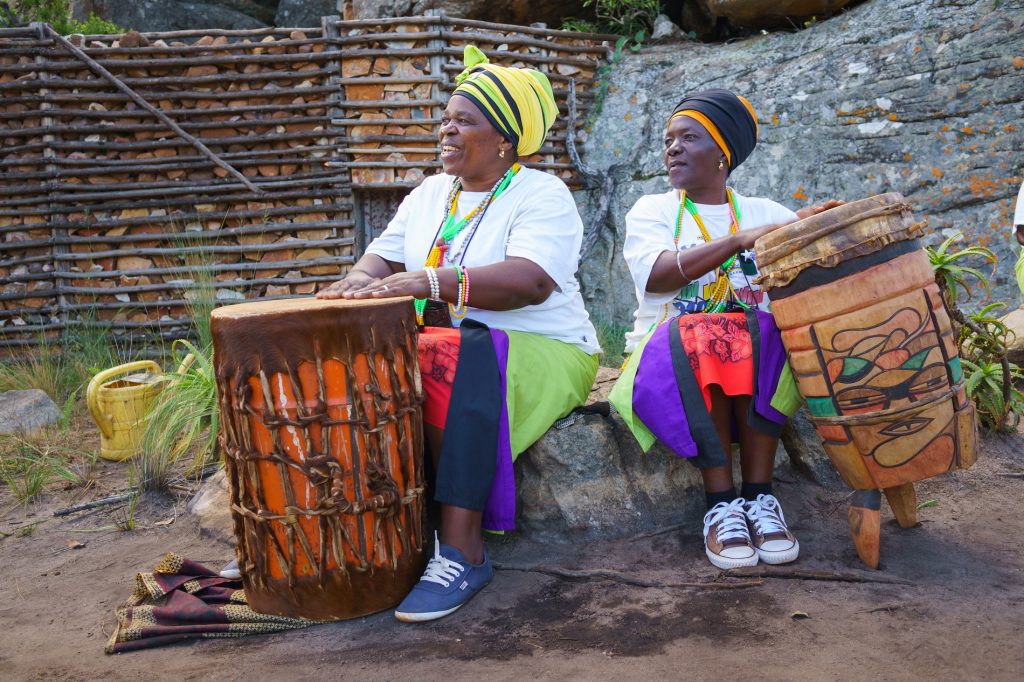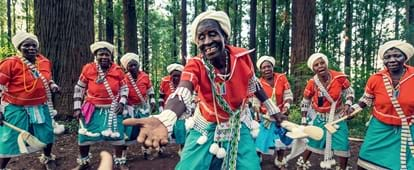Facts About South African Culture Today Revealed
Facts About South African Culture Today Revealed
Blog Article
3 Simple Techniques For South African Culture Today
Table of ContentsSouth African Culture Today Things To Know Before You Get ThisNot known Factual Statements About South African Culture Today Everything about South African Culture TodaySouth African Culture Today for BeginnersSome Of South African Culture TodayThe Only Guide to South African Culture Today
A matter of significance in Zambian towns is the passing away of enjoyed ones. All members of the town put cash, time and effort together for the interment of the deceased.Music and dance is a very vital facet of the Zambian culture. The different tribal units have their own dancing forms; nevertheless, makishi is typical amongst all people.
South African Culture Today Things To Know Before You Buy
When it pertains to songs, drums are used one of the most, with a selection of drumming ceremonies. In Zambia, bulk of individuals are Christian; Protestant and Roman Catholic. There are little teams of Muslims and Hindus, with the rest adhering to neighborhood native tribal beliefs.

South African heritage and culture is greatly diverse, and contains several groups of people that each have their very own customs and ideas. Having such a variety of people and cultures is what makes South Africa so unique. In real feeling of the phrase, we are a rainbow country.
Making it the 7th on the list of countries with the most Portuguese people in it outside of Portugal. Portuguese is not just a culture, but it is also a language and a nationality. Portuguese individuals stem from the nation of Portugal in Europe, nonetheless, due to Portugal (like numerous other countries in Europe) checking out the globe and overcoming other nations throughout the 15th 20th centuries, South Africa has what we call Portuguese South African's living in it.
Fascination About South African Culture Today
Amongst the noticeable features of the topography is a plateau that covers almost two thirds of the center of the country. The plateau complicated increases toward the southeast, where it climaxes in the Drakensberg variety, component of an escarpment that separates the plateau from the coastal areas. The Drakensburg includes Champagne Castle, the greatest height in the country.
The region north of the Witwatersrand, called the bushveld, slopes downward from east to west toward the Limpopo River, which forms the international border. The western area of the plateau, the middleveld, additionally comes down in the direction of the west and differs in altitude between the highveld and bushveld. Between the Drakensburg and the eastern and southern coastline, the land descends to the sea.
Nearer the shore there is a low-lying level called the eastern lowveld. Southwest of the plateau the nation ends up being gradually much more arid, paving the way to the stony desert of the Great Karroo, surrounded on the eastern by the reduced, much better sprinkled plateau of the Little Karroo. Separating the dry southerly interior from the sandy littoral of the southerly coastline and West Cape is one more range, the Langeberg.
Get This Report about South African Culture Today
The country's racially, ethnically, and politically divided background has created national and subnational signs that still function as icons of the country, and others icons that are accepted just by certain teams. The monuments to white inhabitant conquest and political supremacy, such as the Afrikaner Voortrekker ("leader") Monument in Pretoria and the Rhodes Monolith honoring the British colonial realm builder and Cape head of state Cecil Rhodes, remain sectarian signs.
The first contemporary citizens were the San ("bushman") hunter-gatherers and the Khoi ("Hottentot") peoples, that herded livestock (South African culture today). The San might have existed for countless years and left proof of their presence in countless old cave paintings ("rock art"). Bantu-speaking clans that were the ancestors of the Nguni (today's amaZulu, amaXhosa, amaSwazi, and vaTsonga peoples) and Tswana-Sotho language groups (today's Batswana and Southern and Northern Basotho) migrated below eastern Africa as early as the fifteenth century

The 2 former republics of the Orange Free State and Transvaal (South African Republic) were developed by Afrikaner settlers who beat and dispossessed the Basotho and Batswana. Lesotho would certainly have been by force integrated right into the Orange Free State without the click for more expansion of British security in 1869. The supreme marriage of the country resulted from the South African War (18991902) between the British and both Afrikaner republics, which reduced the country to destroy at the beginning of the twentieth century.
Afrikaners historically considered themselves the just real South Africans and, while approving full citizenship to all locals of European descent, denied that status to individuals of shade up until the democratic transition of 1994. British South Africans preserve a feeling of cultural and social connection to Great Britain without weakening their identification as South Africans.
The 20-Second Trick For South African Culture Today
The diversity and fragmentation within ethnic groups and visit this website the balance of stress between those groups throughout the twentieth century stopped interethnic civil conflict. While intergroup stress over resources, entitlements, and political dominance remain, those conflicts are as likely to match Zulu versus Zulu as Zulu versus Xhosa or African versus Afrikaner.
From colonial India, British sellers and managers brought the bent steel decorative roofs and slim shoelace job pillars that still represent the outdoor patios of cottages in the areas and cities throughout the country. Homes of prayer contribute a crucial building aspect even in the tiniest towns. In addition to the rising steeples and classic stonework of Afrikaans Dutch Reformed churches, Anglican churches, synagogues, mosques, and Hindu shrines supply variety to the religious architectural scene.

Slaughtering and the brewing of conventional cereal beer are vital in protecting the involvement and goodwill of the ancestors who are considered the guardians of good ton of money, prosperity, and health. Indian communities maintain their indigenous cooking customs and apply them on Islamic and Hindu ritual and ritualistic celebrations. Afrikaners and Coloured individuals gather at weekends and unique events at multifamily barbeques called braais, where community bonds are strengthened.
Due to the fact that this was the key financial enterprise of both black Africans and white colonists, problem in between those groups focused on the property of grazing land and animals. In 1867, the largest ruby deposits in the world were uncovered at Kimberley in the west main area. The wide range from those fields helped fund the exploitation of the biggest gold reef in the globe, which was found on the Witwatersrand in 1886.
South African Culture Today Things To Know Before You Get This
This resulted in misconceptions and purposeful misstatement in the transactions of white inhabitants and government officials with African principals during the colonial duration (South African culture today). In the facility of African reserves, some facets of communal and mainly "tribal trust fund" land tenure were protected, and also in white backwoods, types of public tenure were still practiced in locations with African areas
After the democratic change of 1994, programs for land restitution, redistribution, and reform were set up, yet progress has been sluggish. The white minority still informative post regulates eighty percent of the land. In the wake of agricultural land invasions in Zimbabwe, the Division of Land Matters has actually pledged to speed land redistribution.
Report this page